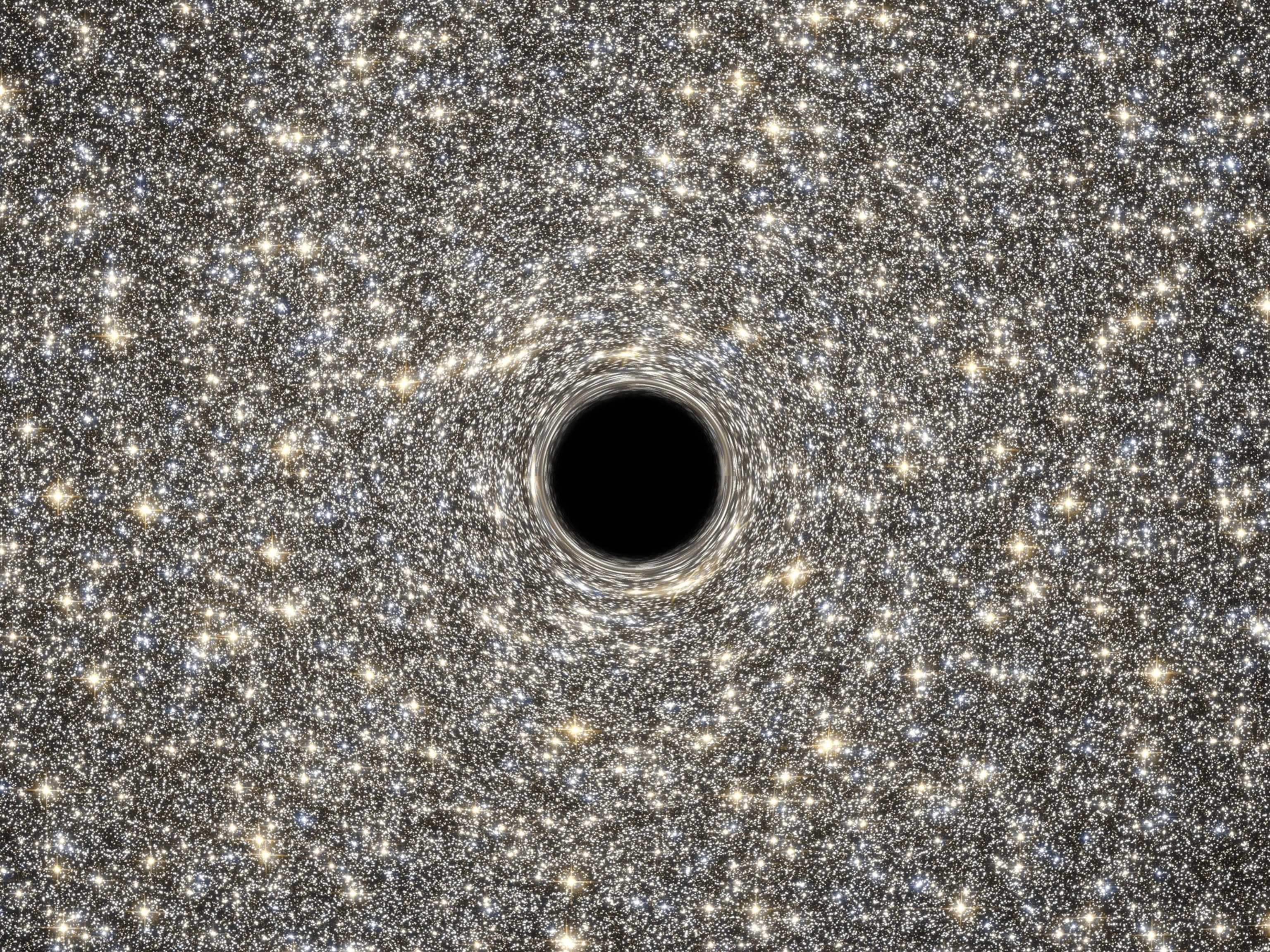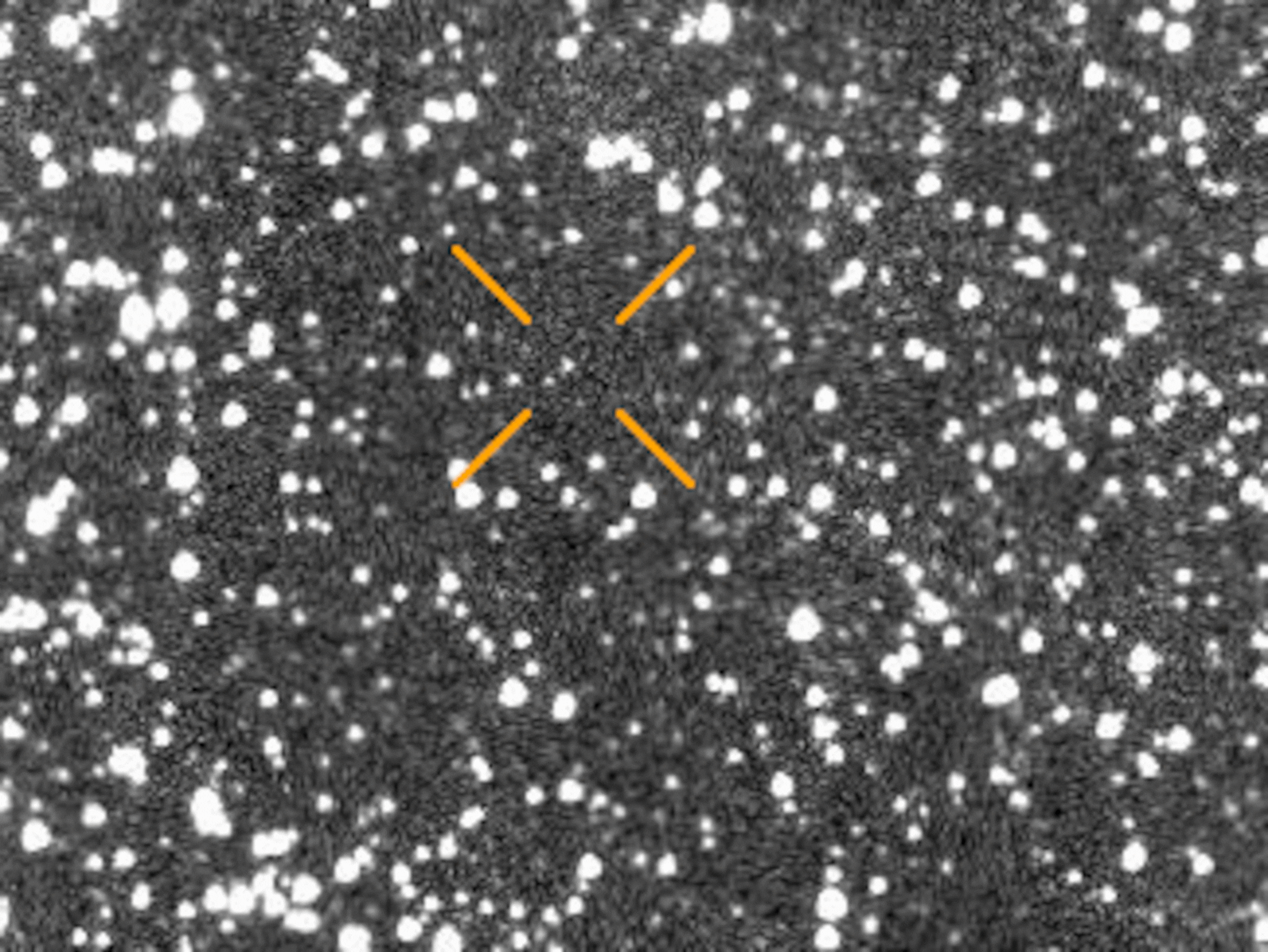
Black Hole Fails to Destroy Mystery Cosmic Cloud
An object zipped by the gravitational monster at our galaxy's center, revealing that it is likely a star.
A cosmic gas cloud seemingly destined for a deadly encounter with the gigantic black hole at the core of the Milky Way has surprisingly survived a close pass by the monster's maw.
The reason, a team of astronomers now argues, is that it wasn't a gas cloud after all. Instead, they claim the mystery cloud dubbed "G2" was the puffy outer atmosphere of a star, one with gravity strong enough to withstand the tug of a nearby jumbo black hole. (Learn more about black holes in "Star Eater" in National Geographic magazine.)
"If it were simply a cloud of gas," says Andrea Ghez of the University of California, Los Angeles (UCLA), a co-author of the report published online on Monday in Astrophysical Journal Letters, "it wouldn't have enough gravity to stay together in the black hole's tidal field."
Almost every galaxy hides at least one supermassive black hole, astronomers suspect, similar to the one called Sagittarius A* at the heart of our own Milky Way galaxy. That giant is some 4.3 million times heavier than the sun. The way these beasts eat and shred gas clouds is thought to play a role in the formation of galaxies, explaining astronomers' interest in the moment in March when G2 made its closest approach to the black hole.
Seeing Double
Exactly what G2 is, however, remains unclear. Ghez and her colleagues had suspected all along that it might be more than just a gas cloud. That's because such clouds would be very short-lived in the intense gravity field surrounding Sagittarius A*.
"You'd have to assume that it happened to form just before it was discovered," says Ghez, which seemed like too much of a coincidence.
That suspicion was reinforced, the study authors say, when G2 made its closest approach to the black hole. Images from the Keck Observatory in Hawaii and other telescopes made clear that it stayed together. As a result, the UCLA team concludes that G2 must actually be a star.
"One thing puzzled us, though," Ghez says. "If it's a star, it has to be fairly unusual." Its mass is no more than about twice that of the sun, but it's about a hundred times larger than you'd expect.
They realized it made sense, however, if G2 had formed from the merger of two smaller stars. Astronomers have known for more than 200 years that many stars come in pairs, and, says Ghez, "if you put binary stars near a black hole, you'd expect mergers to happen reasonably often."
Close But No Cigar?
A rival group, however, led by Stefan Gillessen at the Max Planck Institute for Extraterrestrial Physics in Munich, Germany, disagrees with the new study's interpretation. Gillessen and his team were the ones who originally found G2 in 2011 with the Very Large Telescope located in Chile.
"Our observations don't rule out the idea that this is a star," says Gillessen. "But the other group's observations don't rule out the idea that it is a gas cloud."
Gillessen suggests instead that the cloud—if it is a cloud—probably elongated into a cigar shape under the black hole's tidal forces. We're seeing it end-on, however, so we don't see this elongation. Such a cloud might have survived a black hole flyby if it started out with relatively high density, which would have helped keep it together.
In fact, says Avi Loeb, chair of Harvard's astronomy department, "we still don't know which scenario is correct." Loeb, who has done research on G2, and who isn't affiliated with either team, observes that "these two groups have a long history of rivalry, and often prefer to disagree with each other." There's only one truth, he says. "Eventually, it will be clear which interpretation is correct."
Either way, says Loeb, G2's dance with our galaxy's giant black hole offers a rare opportunity for astronomers. "Physicists can often test their ideas by designing a lab experiment," he points out. "In astronomy, we have to accept what nature gives us."
This is one situation where nature is giving scientists a look at something that presumably happens all the time across the cosmos. But this time we have a ringside seat.
Follow Michael D. Lemonick on Twitter.





